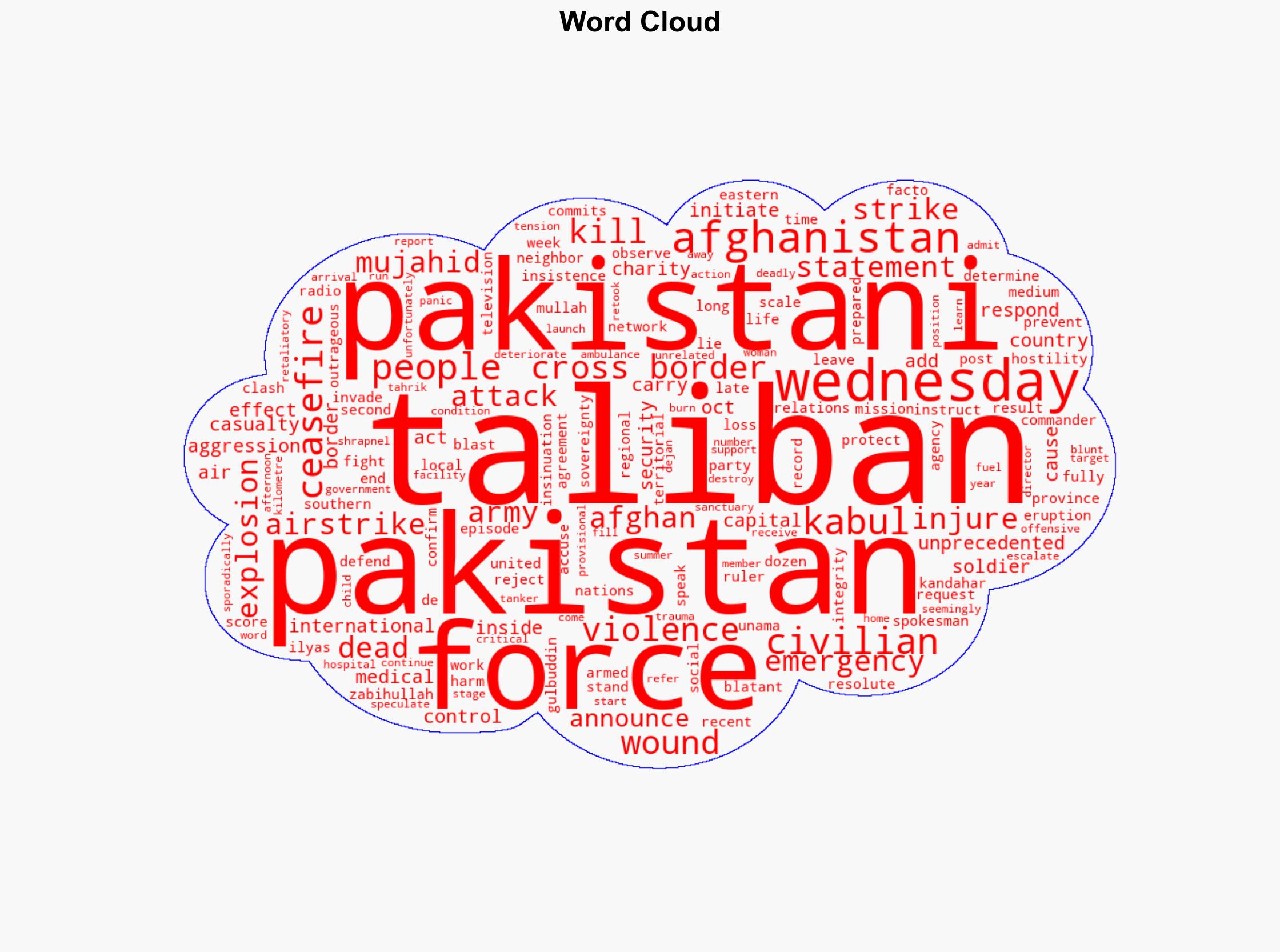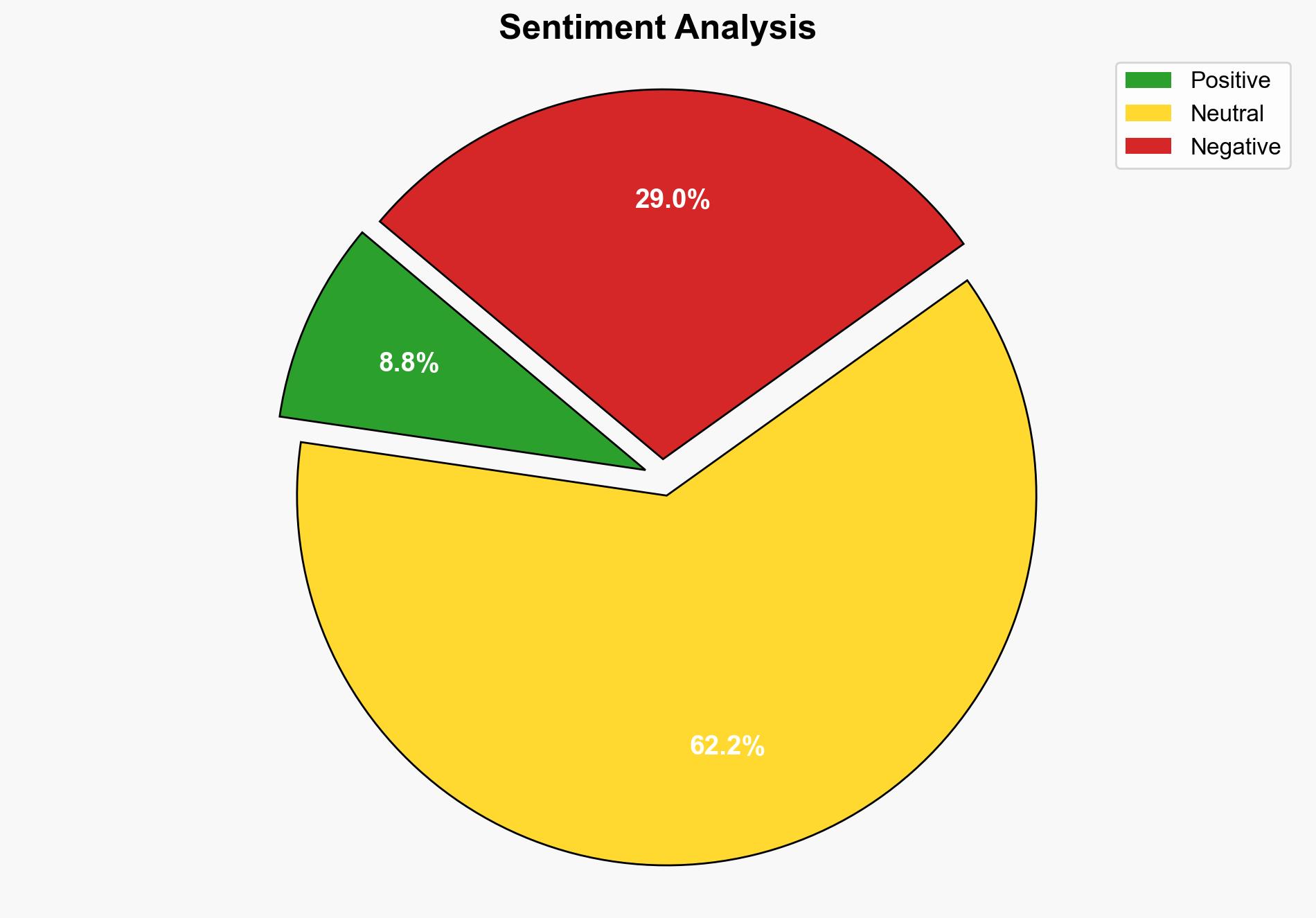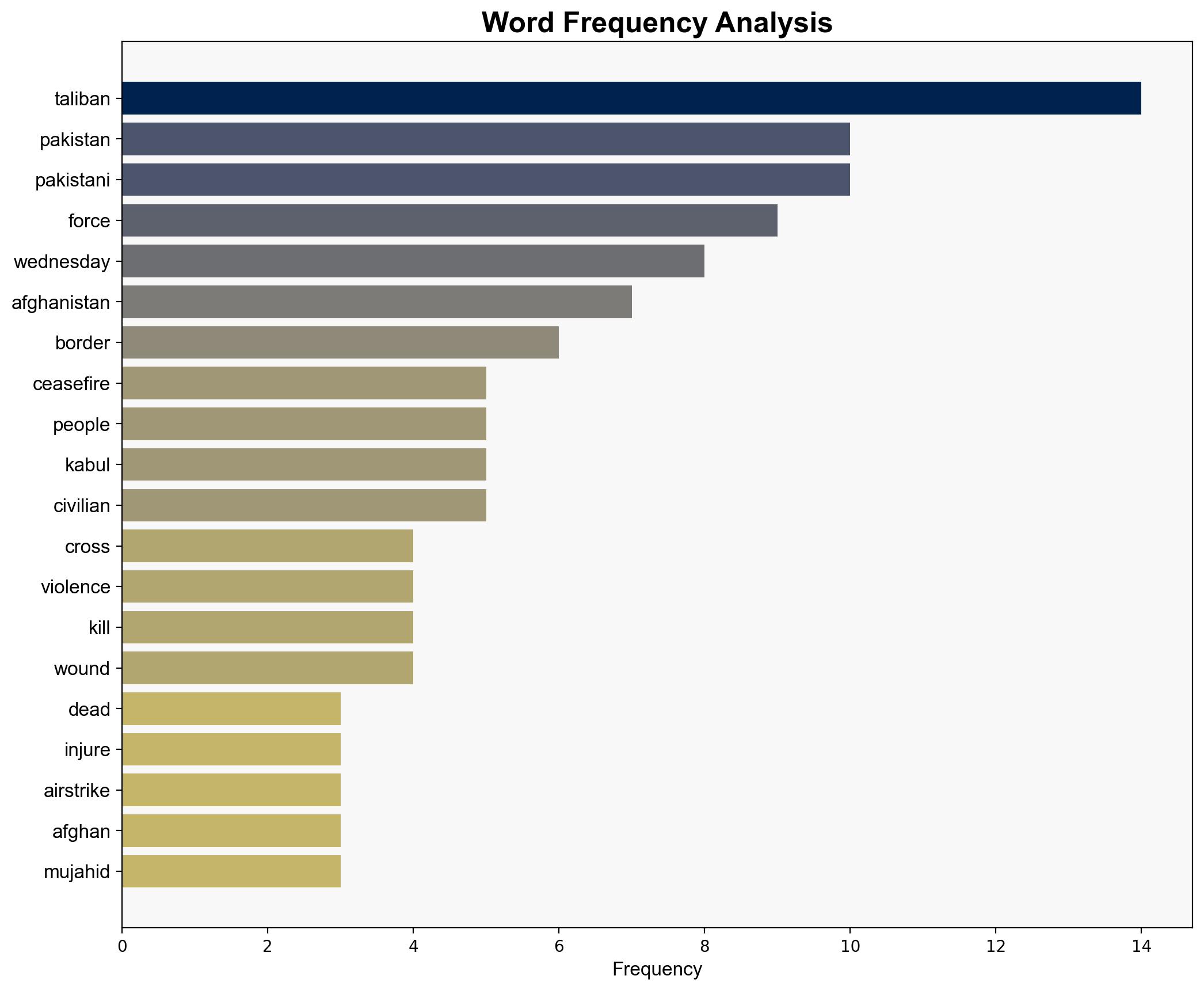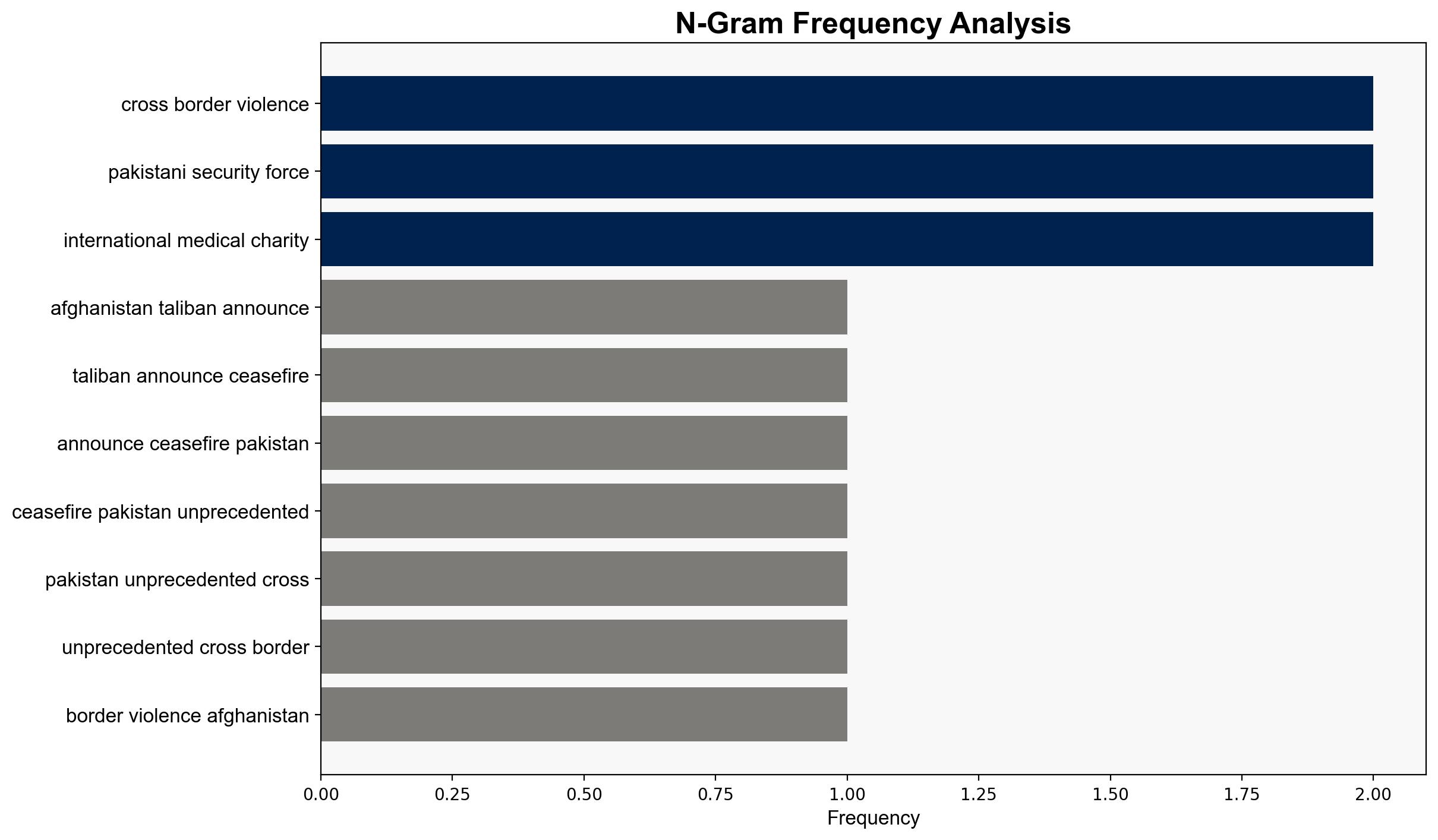Taliban reports ceasefire with Pakistan after unprecedented clashes – CBS News
Published on: 2025-10-15
Intelligence Report: Taliban reports ceasefire with Pakistan after unprecedented clashes – CBS News
1. BLUF (Bottom Line Up Front)
The most supported hypothesis is that the ceasefire is a tactical maneuver by the Taliban to de-escalate tensions temporarily while consolidating power and resources. Confidence level: Moderate. Recommended action: Monitor compliance with the ceasefire and assess the potential for renewed hostilities, focusing on intelligence collection regarding Taliban and Pakistani military activities.
2. Competing Hypotheses
1. **Hypothesis A**: The ceasefire represents a genuine effort by both the Taliban and Pakistan to de-escalate tensions and prevent further civilian casualties, driven by international pressure and humanitarian concerns.
2. **Hypothesis B**: The ceasefire is a strategic pause by the Taliban to regroup and strengthen their position, while Pakistan seeks to avoid international scrutiny and maintain regional stability.
Using ACH 2.0, Hypothesis B is better supported due to historical patterns of temporary ceasefires being used by the Taliban for strategic gains and Pakistan’s interest in avoiding prolonged conflict that could destabilize its border regions.
3. Key Assumptions and Red Flags
– **Assumptions**: Both hypotheses assume that the Taliban and Pakistan have control over their respective forces to enforce a ceasefire. It is also assumed that both parties are responsive to international pressure.
– **Red Flags**: Contradictory statements from Taliban and Pakistani officials about the initiation of violence suggest potential deception. The lack of independent verification of the ceasefire terms raises concerns about its authenticity.
4. Implications and Strategic Risks
– **Implications**: Continued violence could destabilize the region, affecting international relations and humanitarian conditions. A breakdown in the ceasefire could lead to increased refugee flows and strain on neighboring countries.
– **Strategic Risks**: Escalation could draw in other regional actors, complicating diplomatic efforts. The potential for miscalculation or accidental engagement remains high, risking broader conflict.
5. Recommendations and Outlook
- Enhance intelligence sharing with regional allies to monitor compliance and detect early signs of ceasefire violations.
- Engage in diplomatic efforts to encourage dialogue between the Taliban and Pakistan, leveraging international organizations to mediate.
- Scenario Projections:
- Best Case: Ceasefire holds, leading to negotiations and reduced violence.
- Worst Case: Ceasefire collapses, resulting in intensified conflict and regional instability.
- Most Likely: Sporadic violations occur, but large-scale conflict is avoided through diplomatic pressure.
6. Key Individuals and Entities
– Zabihullah Mujahid
– Mullah Gulbuddin Ilyas
– Pakistani military officials
7. Thematic Tags
national security threats, regional stability, conflict resolution, humanitarian impact





